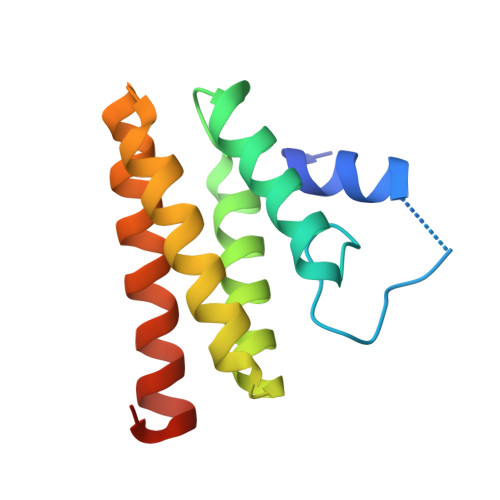A Small Molecule Targeting Mutagenic Translesion Synthesis Improves Chemotherapy.
Wojtaszek, J.L., Chatterjee, N., Najeeb, J., Ramos, A., Lee, M., Bian, K., Xue, J.Y., Fenton, B.A., Park, H., Li, D., Hemann, M.T., Hong, J., Walker, G.C., Zhou, P.(2019) Cell 178: 152
- PubMed: 31178121
- DOI: https://doi.org/10.1016/j.cell.2019.05.028
- Primary Citation of Related Structures:
6C59, 6C8C - PubMed Abstract:
Intrinsic and acquired drug resistance and induction of secondary malignancies limit successful chemotherapy. Because mutagenic translesion synthesis (TLS) contributes to chemoresistance as well as treatment-induced mutations, targeting TLS is an attractive avenue for improving chemotherapeutics. However, development of small molecules with high specificity and in vivo efficacy for mutagenic TLS has been challenging. Here, we report the discovery of a small-molecule inhibitor, JH-RE-06, that disrupts mutagenic TLS by preventing recruitment of mutagenic POL ζ. Remarkably, JH-RE-06 targets a nearly featureless surface of REV1 that interacts with the REV7 subunit of POL ζ. Binding of JH-RE-06 induces REV1 dimerization, which blocks the REV1-REV7 interaction and POL ζ recruitment. JH-RE-06 inhibits mutagenic TLS and enhances cisplatin-induced toxicity in cultured human and mouse cell lines. Co-administration of JH-RE-06 with cisplatin suppresses the growth of xenograft human melanomas in mice, establishing a framework for developing TLS inhibitors as a novel class of chemotherapy adjuvants.
- Department of Biochemistry, Duke University Medical Center, Durham, NC 27710, USA.
Organizational Affiliation:

















